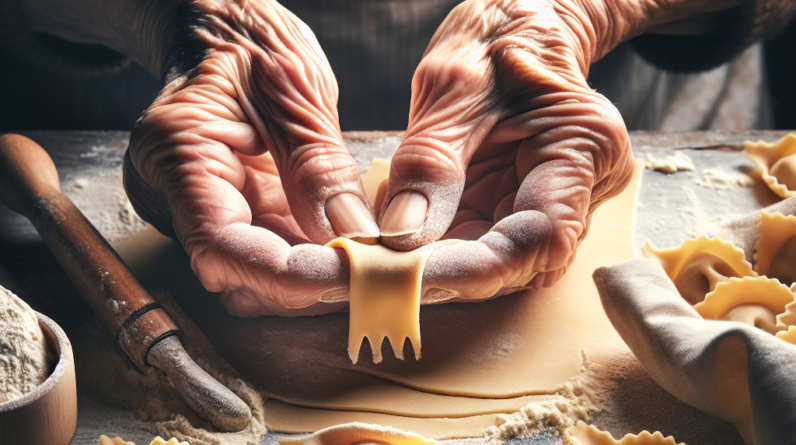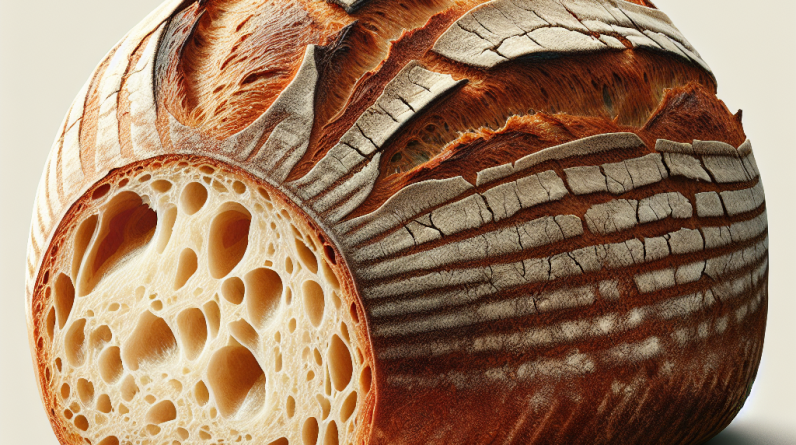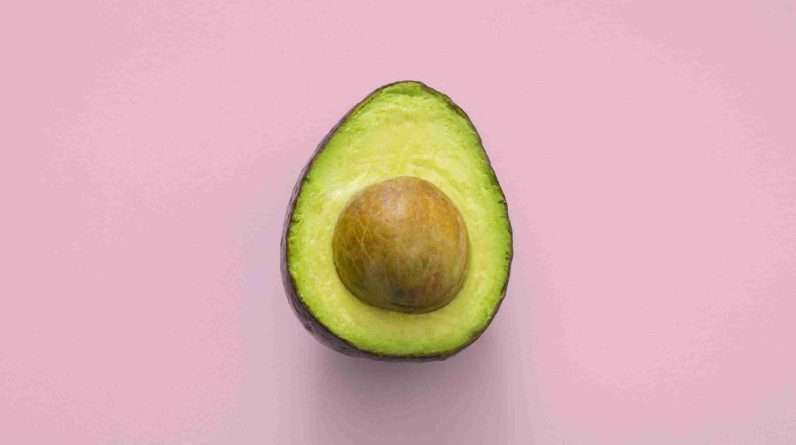Today, we take you on a journey to discover the fascinating tale behind the creation of one of Italy’s most beloved culinary treasures: spaghetti carbonara. This iconic dish has captured the hearts and palates of people around the world, but have you ever wondered about its origins? We dive into the rich history, exploring the legends and anecdotes that surround its birth, uncovering the secrets that make it a timeless classic. Get ready to tantalize your taste buds and satisfy your curiosity as we unravel the captivating story behind spaghetti carbonara.
Origins of Carbonara
Spaghetti carbonara is a beloved Italian dish that has become popular worldwide. While the exact origins of carbonara are shrouded in mystery and debated among food enthusiasts, there are a couple of prevailing theories about its beginnings.
A popular theory: coal miners
One theory suggests that carbonara was created by coal miners in the Apennine Mountains. These miners would often bring eggs, cheese, and guanciale (cured pork jowl) with them into the mines. They would mix these ingredients with pasta to create a hearty and satisfying meal. The name “carbonara” is thought to be derived from the Italian word “carbone,” meaning coal, further supporting the theory that this dish was born in the mines.
Another theory: Allied troops
Another theory suggests that carbonara was introduced to Italy during World War II by Allied troops, particularly American soldiers. It is believed that American soldiers, who had access to eggs, bacon, and powdered cheese, introduced these ingredients to Italian cooks, who then incorporated them into pasta dishes. Over time, this American influence resulted in the creation of the carbonara we know today.
Debate over authenticity
The origins of carbonara may still be up for debate, but what is clear is that it has become an integral part of Italian cuisine. Regardless of its exact origin, the dish has evolved and been embraced by both Italians and people around the world.
Etymology of Carbonara
Understanding the etymology of the word “carbonara” can provide insight into its history and cultural significance.
The meaning of carbonara
The term “carbonara” itself does not have a widely agreed-upon meaning. Some argue that it refers to the use of “carbone” or coal, connecting it to the theory of coal miners. Others believe it is derived from the word “carbonaro,” which means charcoal burner, referencing the men who would make charcoal in the Apennine Mountains.
Possible origin of the name
Another explanation for the name’s origin is that “carbonara” may be derived from the Italian word “carbone,” meaning carbon, which could symbolize the black pepper used in the dish. The liberal use of black pepper is a defining characteristic of spaghetti carbonara, adding a distinct flavor and visual appeal to the dish.
![]()
Key Ingredients of Carbonara
The key ingredients of carbonara are essential to its unique and delicious flavor.
Role of guanciale
Guanciale, a cured pork jowl, is a fundamental component of traditional carbonara. It has a rich, fatty flavor that infuses the sauce with its distinctive taste. The guanciale is typically fried until crispy, releasing its flavors and adding a delightful crunch to the dish.
Use of pecorino romano
Another crucial ingredient in carbonara is pecorino romano, a hard, salty cheese made from sheep’s milk. This cheese adds a distinct savory taste to the dish and enhances the creamy texture of the sauce. Pecorino romano is typically grated and mixed into the pasta along with the other ingredients.
Addition of eggs and black pepper
Eggs play a vital role in creating the creamy, silky texture of traditional carbonara. They are combined with grated pecorino romano cheese and black pepper, creating a luscious sauce that envelops the pasta. The eggs are usually lightly cooked by mixing them into the hot pasta, allowing their residual heat to thicken the sauce.
Recipes and Variations
There are various recipes and regional variations of carbonara, each with its unique twist on the classic dish.
Classic Roman-style Carbonara
The classic Roman-style carbonara is the most well-known version of the dish. It typically consists of spaghetti pasta, guanciale, pecorino romano cheese, eggs, black pepper, and salt. The guanciale is fried until crispy, while the eggs and cheese are mixed together to form a creamy sauce. The cooked pasta is then tossed with the sauce until evenly coated, creating a simple yet decadent dish.
Different types of pasta
While spaghetti is the traditional pasta of choice for carbonara, many variations feature different pasta shapes. Some prefer using rigatoni or fettuccine, which can hold the rich sauce and allow for a more substantial bite. The choice of pasta can influence the overall experience of the dish, providing different textures and mouthfeel.
Regional variations of Carbonara
Across Italy, regional variations of carbonara have emerged, each incorporating local ingredients and culinary traditions. For example, the Carbonara di Norcia from Umbria often includes truffles, adding a luxurious and earthy flavor. In southern Italy, specifically in Calabria, the addition of peppers and chili flakes infuses the dish with a delightful heat. Exploring these regional variations can expand one’s appreciation of the diverse interpretations of carbonara throughout Italy.
![]()
Cultural Significance
Carbonara holds immense cultural significance in Italy and beyond, representing more than just a delicious pasta dish.
Carbonara as a symbol of Rome
In Rome, carbonara is regarded as one of the city’s iconic dishes, proudly representing the local cuisine. Its association with the city has elevated its cultural significance and made it an emblem of Roman culinary traditions. Tourists and locals alike seek out authentic carbonara in Roman restaurants, ensuring its continued popularity.
Popularity in Italian cuisine
Carbonara’s popularity extends beyond Rome, and it has become a staple in Italian cuisine. It is frequently featured on menus throughout Italy, from humble trattorias to high-end restaurants. This widespread adoption showcases the dish’s timeless appeal and the appreciation Italians have for its rich flavors and comforting qualities.
International adaptation and recognition
Carbonara’s popularity has transcended national borders, and it is now celebrated worldwide. It has become a staple of Italian restaurants and home kitchens in various countries. Carbonara’s inclusion on menus and its appreciation by people around the globe highlights its status as a beloved and internationally recognized dish.
Carbonara Controversies
Despite its widespread popularity, carbonara has faced its fair share of controversies and debates among both professional chefs and home cooks.
Cream or no cream?
One of the most contentious debates surrounding carbonara is whether or not to include cream in the sauce. Traditional carbonara recipes do not call for cream, relying solely on eggs and cheese to create the creamy consistency. However, some variations, particularly outside of Italy, incorporate cream into the dish, creating a richer and smoother sauce. Purists argue that adding cream dilutes the essence of carbonara, while others embrace the creamy variations as a delightful twist on the classic.
Proper cooking technique
The cooking technique for carbonara has also been a topic of debate. The challenge lies in achieving the perfect balance of silky sauce and well-cooked pasta without scrambling the eggs. Some opt for cooking the sauce separately and combining it with the cooked pasta, while others mix the eggs directly into the hot pasta to allow them to gently cook. Each method has its merits, and ultimately, personal preference and experimentation play a significant role in determining the technique used.
Authenticity and traditionalism
The question of authenticity is inherent in any beloved traditional dish. Carbonara is no exception, with purists arguing for strict adherence to the traditional Roman recipe. However, others argue that the evolution of dishes is natural and should be embraced. The debate over what constitutes an authentic carbonara adds to the ongoing conversation about the preservation of culinary traditions and the potential for creativity and innovation.
![]()
Notable Carbonara References
Carbonara’s cultural impact extends beyond the realm of cuisine, having inspired various forms of art and media.
Portrayal in popular media
Carbonara has made appearances in popular films, television shows, and literature, often depicted as a symbol of Italian culture and gastronomy. Its inclusion in movies like “Eat Pray Love” and TV shows like “MasterChef” has further solidified its reputation as an iconic Italian dish.
Carbonara-inspired art and literature
Beyond the screen, carbonara has influenced artists and writers who have been captivated by its allure. Paintings and photographs featuring carbonara as a subject nod to its cultural significance, while literature explores the emotional and sensory experience that the dish evokes. Such artistic representations serve to immortalize carbonara’s place within the collective consciousness.
Misconceptions and Popular Myths
Like any popular dish, carbonara has attracted some misconceptions and popular myths along the way.
The association with bacon and garlic
One widespread misconception is the interchangeability of bacon and guanciale in carbonara. While bacon can be a reasonable substitute for guanciale due to its similar flavor profile, purists argue that guanciale’s distinct taste is essential for an authentic carbonara. Additionally, garlic is not traditionally used in carbonara, although some variations may incorporate it to add an extra layer of flavor.
Carbonara preparation mistaken as Alfredo
Another common misconception is the confusion between carbonara and fettuccine Alfredo. While both dishes feature pasta and a creamy sauce, the two are distinct in terms of their ingredients and preparation. Carbonara relies on eggs, cheese, guanciale, and black pepper for its sauce, whereas Alfredo sauce is typically made with butter, cream, and Parmesan cheese.
Carbonara Festivals and Competitions
Carbonara’s popularity has inspired annual festivals and competitions that celebrate this beloved Italian dish.
Annual festivals in Italy
Many Italian cities and regions hold annual carbonara festivals, showcasing the dish’s regional variations and providing an opportunity for locals and tourists to sample authentic carbonara. These festivals often incorporate cooking competitions, live music, and cultural events, creating a festive atmosphere centered around this culinary delight.
World’s Best Carbonara competition
On a global scale, events like the World’s Best Carbonara competition bring together talented chefs from around the world to showcase their unique interpretations of this classic dish. The competition fosters creativity and innovation while honoring the traditions and flavors that make carbonara so special.
Carbonara’s Evolution and Future
Carbonara’s journey from its disputed origins to its international recognition has had a profound impact on Italian cuisine and the culinary world as a whole.
Influence on modern Italian cuisine
Carbonara’s popularity has influenced modern Italian cuisine, inspiring chefs to experiment with new ingredients, textures, and presentations. Contemporary interpretations of carbonara can be found in high-end restaurants, where chefs elevate the dish with innovative techniques and unexpected twists. By honoring the traditional elements while embracing modern culinary trends, carbonara continues to evolve and captivate diners’ palates.
Experimental variations and reinterpretations
In addition to inspiring renowned chefs, carbonara has become a playground for home cooks and food enthusiasts to experiment with variations and reinterpretations. From incorporating different types of cheese to adding unique ingredients like mushrooms or seafood, the possibilities for creating personalized versions of carbonara are endless. These experimental variations demonstrate the adaptability and versatility of carbonara, ensuring its continued relevance and enjoyment for future generations.
In conclusion, the origins of carbonara may be uncertain, but its impact on Italian cuisine and beyond is undeniable. Whether it was born in the dark depths of coal mines or introduced during wartime, spaghetti carbonara has become an iconic and beloved dish that represents Italian culture. Its key ingredients, cooking techniques, and regional variations showcase the diversity and richness of Italian gastronomy. While controversies and misconceptions persist, carbonara’s enduring popularity, cultural references, and annual festivals demonstrate its lasting legacy. From its humble beginnings to its future as a canvas for culinary innovation, carbonara has cemented its place as a timeless classic.









